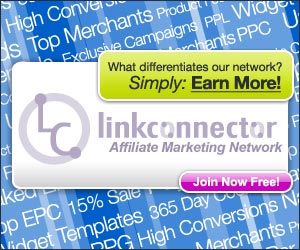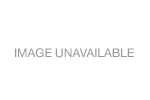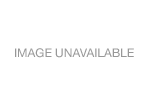Writing The Perfect Sales Letter
Before you actually write the e-book we are going to write the sales letter first. Now I suggest you write it in Microsoft Word and save it. Then we can transfer it to the main "Sales site Page" when we are designing our basic site in step 5
The main reason we are writing our sales copy before we ever write a word in our e-Book is because it hasn’t actually being created yet, which means there is absolutely no limit what you can write in your sales letter. The sales letter doesn’t fit the e-Book; it’s the other way around.
Now you can describe exactly what your e-Book will show to the potential customer. There are no restrictions on what you can write in the sales letter. When the sales letter is completed you can then incorporate all the ideas you have come up with into your e-Book
Your sales copy must do the following three things
* Get the attention of the prospects
* Communicate the benefits of the product
* Persuade the prospects into the desired action
Remember the most important part of your page design is your actual sales copy. A fancy website and graphics help but the key is in the words used
Sales letter Structure
* Header/Title
* Promises
* Testimonial
* Info product
* Benefit
* Bonuses
* Guarantee
* Summary
This is the structure that you should use for your sales copy. If you check out the best sales letter they will all follow this formula?
Header
The main function of the header/title is to grab the reader’s attention. The header should be displayed in a large, bold font. This demands your potential customer’s attention and intrigues them to read further on. Include your logo or e-Book cover (discussed later on) close to the header. If you header is not well designed you run the risk of losing the potential customer straight away. Spend time creating your header.
A Promise
This section promises the potential customer a huge benefit which is almost too good to be true. It’s ok if it’s a bit too unbelievable the testimonials will take care of that. Here is an example of such a headline
Discover how my 5 step affiliate programme can increase your income by 10,000 a month
Testimonials
In this section you include testimonials that old/new customers have sent you about your product or service. You probably don’t have any customers yet so email some potential ones your e-book for free in exchange for a testimonial. When you do start selling you can always ask a new customer for one.
Now the testimonials page has assured the potential customer that you can fulfil the promises you made in your header also you have gained a bit of trust from your potential customers so anything else you say that follows the testimonials page will be taken as true. This is the reason why the testimonial is placed at the top to gain trust right away where if it was placed at the bottom after presenting some good sales copy it may be already too late.
Info and product
In this section you will give info on what your product or service is about. You should show your customers a list of problems in this area. Agree with the customers, on how frustrating these problems can be and how you, yourself dealt with these problems. The key is to show the person that you have a deep understanding in this area and you are an expert on the subject. That is very important.
Next you must introduce your product as the solution to the problem. Then you must have a proper e-Book cover design. This is crucial. Many people have never purchased an e-book so you must give them some idea what exactly they will be purchasing
Benefit
This section is basically telling your potential customer of the benefits they will receive from purchasing your product. Show your potential customers the enjoyment they will get from using the product. Give them as much information on your product as you can. Use bullet points to emphasize the benefits. Put in another testimonial just to remind the person that it’s all true. Keeping their trust is highly important.
Bonuses
This is a powerful tactic used to increase sales. Including free bonuses with the purchase of your e-Book will increase the perceived value of the e-Book. Also a deadline on bonuses is also a good way to speed up consumer purchases. Bonuses also reduce the risk of money back returns
Guarantee
Offering a guarantee to your potential customers takes the risk off their shoulders. A good guarantee is the final bit in the jigsaw that will make the person finally purchase the product. The agreement is such that if the customer is not happy with their purchases then can get a full refund. You must remember that lots of your potential customers will be "first timers" therefore a guarantee puts their minds at ease. Guarantees can be 30 day, 60 day, or lifetime; however such guarantees must be backed up with an exceptional product.
Summary
This is one of the most important steps in the sales letter; this is where you close the sale. In this section you must include your most appealing benefit and finally ask for the order, because if you don’t they wont. Finally make it easier for them to order like an "order now" button shown below.
At this stage you should start to write your sales letter in Microsoft word we will concentrate on the html design and implementing the sales letter in it in section six but for now just concern yourself with writing your sales letter. To help you here are some of the web’s top e-book publishers sales sites.
Sales Letter generator
Ok ill now offer you an alternative to writing the sales page yourself. Only use this if you are willing to spend some money. You may want to check out this piece of software that actually writes the sales letter for you. All you do is answer the questions it asks and you will receive your sales letter. You can find this software at sales generator here
Credit card Transactions
Finally you will need to find a credit card processor later on so your e-Books can be ordered. The one I seriously recommend is Clickbank. Ill go into them in more detail in section 6 but for now I want you to know that all these company’s, including Clickbank, have a set of rules that you must abide by to use their software. Don’t panic ill go through these rules now. Basically it involves putting a certain amount of details in your sales letter and product delivery page so you can be accepted by your credit transaction company. So here they are:
You must provide on your sales page:
* Detailed description of your product
* Buy now link
* Explain how the product will be delivered
* Mention how long the delivery will take
* remember theses are rules not suggestions
So that is everything you need to know on how to write your sales letter, hers a quick summary
We need to:
* Write the sales letter before the e-Book
* Sales letter structure must have , header, promise, Testimonial, info and product, benefit, bonuses, guarantee and summary
* You can have your sales letter made by Sales letter generator
* Certain set of rules should be included in the sales letter for the purpose of the credit card transaction company
Other Projects
Subscribe
Subscribing will enable you to get regular notifications about new postings...
Check out the Survival Gear from Atlanta Cutlery Corp today










